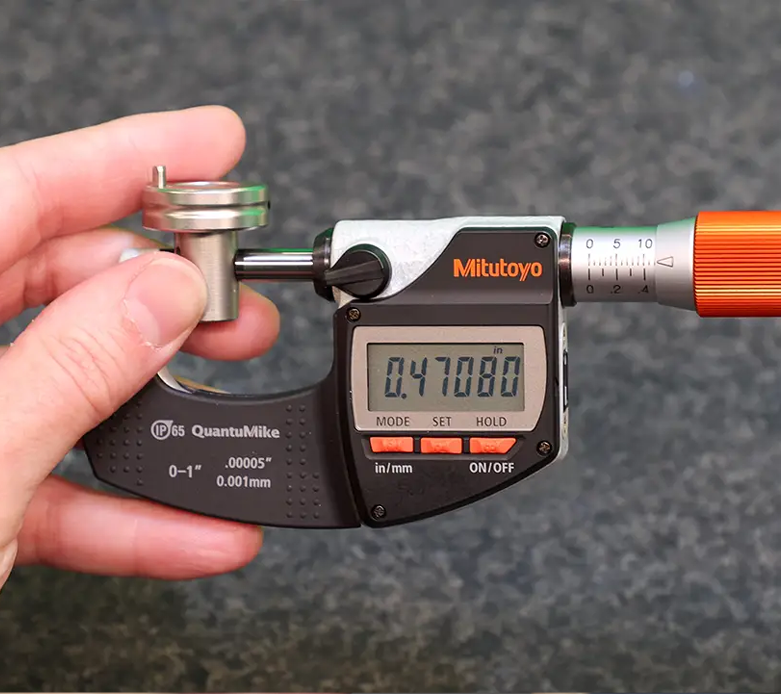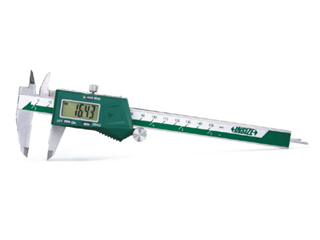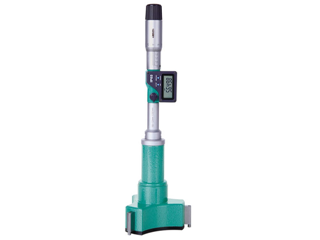Don't have an account?
Creating an account has many benefits: check out faster, keep more than one address, track orders and more.
Or
Checkout as a Guest
Place your order without creating an account for extra convenience.
An Expert Guide on Digital Outside Micrometers
Contents
- Introduction to digital outside micrometers
- What are outside digital micrometers?
- Digital vs Analogue Micrometers
- How accurate are outside digital micrometers?
- How do you calibrate an outside digital micrometer?
- Can outside digital micrometers measure in both metric and imperial units?
- What is the best way to maintain and clean a digital micrometer?
- How do you read measurements on a digital micrometer?
- What features should I look for when buying a digital micrometer?
- Are there digital micrometers with data output capabilities?
- How do you ensure consistent and accurate measurements with a digital micrometer?
- Summary of outside digital micrometers
Introduction to digital outside micrometers
In this article you will find out more about what external (outside) micrometers are, the differences between analogue and digital, the different applications, how to maintain them and the importance of calibration.
What are outside digital micrometers?
A digital outside micrometer is used to precisely measure the external dimensions of objects, such as the diameter of rods, wires, or the thickness of sheets. It provides highly accurate readings, typically down to microns or thousandths of an inch, making it essential in machining, engineering, and quality control. The digital screen ensures easy reading and reduces the chance of human error. Many models also offer data output for recording measurements electronically.
Digital vs Analogue Micrometers
Digital micrometers are high-precision measuring tools used in manufacturing, machining, and quality control to accurately measure the thickness of a component or workpiece. Featuring a digital display, they eliminate reading errors and provide quick, reliable measurements.
Benefits of Digital Micrometers
-
Digital micrometers can reduce human error due to their digital displays that clearly indicate the measurement which reduce reading errors that are more likely to appear on analogue micrometers,
-
Digital micrometers can also take more precise measurements. Often up to 0.001mm (0.00005 inches).
-
There is also the ability to unit convert, a lot of digital micrometers have the ability to convert the units which can be very useful.
A digital micrometer offers several advantages over an analogue micrometer, including easier readability, as the digital display eliminates the need to interpret scale markings. It also provides higher precision and reduced human error, with direct numerical readings preventing miscalculations.
An analogue micrometer is a precision measuring tool used to determine small dimensions with high accuracy, typically to 0.01 mm or 0.001 inches. It operates using a calibrated screw mechanism, with measurements read from a fixed sleeve scale and a rotating thimble. Common types include outside, inside, and depth micrometers, each designed for specific measurement tasks.
Benefits of Analogue Micrometers
-
No batteries required, making it easier to use. This means they won’t need charging, batteries replacing, making them lower maintenance.
-
More cost effective than digital micrometers. This means money can be saved.
-
Often durable and reliable, unlike digital micrometers, there are no worries about water and dust getting into the electrics since they don’t have any.


How accurate are outside digital micrometers?
Outside digital micrometers are highly accurate, typically offering a resolution of 0.001 mm (1 micron) or 0.00005 inches. Their accuracy usually ranges from ±0.001 mm to ±0.003 mm, depending on the model and manufacturer. High-end micrometers provide even tighter tolerances, making them ideal for precision machining and quality control.
How do you calibrate an outside digital micrometer?
To calibrate an outside digital micrometer, start by cleaning the measuring faces with a lint-free cloth to remove dust or debris. Close the micrometer by gently bringing the anvils together and check if the display reads zero; if not, use the zero function to reset it. Next, use a calibration standard (such as a certified gauge block) that matches the micrometers range-typically 25 mm or 1 inch for standard models. Place the gauge block between the anvils, apply consistent measuring pressure, and verify the reading. If there is a discrepancy, adjust the micrometer using its calibration settings or consult the manufacturer’s manual for fine-tuning.
Alternatively, we offer official calibration to UKAS standards – please visit our calibration page to find out more or make an enquiry.
Can outside digital micrometers measure in both metric and imperial units?
Yes, most outside digital micrometers can measure in both metric (millimetres) and imperial (inches) units. They typically have a unit conversion button, allowing users to switch between measurement systems instantly.
What is the best way to maintain and clean a digital micrometer?
To maintain and clean a digital micrometer, keep it free from dust, dirt, and moisture by wiping it with a soft, lint-free cloth after use. Use a small brush or compressed air to remove debris from the spindle and anvil. Avoid using excessive force when measuring to prevent wear on the components. Store the micrometer in a protective case when not in use to prevent damage.
How do you read measurements on a digital micrometer?
Reading measurements on a digital micrometer is simple because the digital display directly shows the measurement value without needing manual interpretation. To take a reading, place the object between the spindle and anvil, apply consistent measuring pressure using the ratchet or thimble, and ensure the object is properly aligned. The measurement will appear instantly on the LCD screen in either millimetres or inches, depending on the selected unit.


What features should I look for when buying a digital micrometer?
When buying a digital micrometer, look for high accuracy and resolution, typically ±0.001 mm (1 micron) or 0.00005 inches, to ensure precise measurements. A clear LCD display makes readings easy, and a unit conversion function allows switching between metric and imperial measurements. Consider data output capabilities (USB, Bluetooth) for recording measurements digitally. Look for IP-rated water and dust resistance if working in harsh environments.
Are there digital micrometers with data output capabilities?
Yes, many modern digital micrometers come with data output capabilities, allowing users to transfer measurements to a computer or data collection system. These micrometers often feature USB, RS232, or wireless connectivity (Bluetooth or Wi-Fi) for efficient data logging and analysis.
How do you ensure consistent and accurate measurements with a digital micrometer?
To ensure consistent and accurate measurements with a digital micrometer, it is important to apply consistent measuring pressure using the ratchet stop to avoid over-tightening, which can distort the measurement. Always zero the micrometer before use to eliminate any discrepancies and regularly calibrate it with certified gauge blocks to verify accuracy. Keep the measuring faces clean and free of debris, as even small particles can affect readings.
Summary of outside digital micrometers
Digital micrometers are precise tools commonly used in manufacturing, machining, and quality control to measure the thickness or external diameter. They offer key features such as a digital display, high accuracy and resolution, data output, and the ability to switch between zeroing and absolute/incremental modes. These micrometers provide highly accurate readings, typically within ±0.001 mm, and are easy to read compared to analogue models, reducing human error.
Cutwel supply a wide range of high quality outside micrometers from leading brands such as Insize, Mitutoyo, Moore & Wright, Mahr and more. For more information or to make an enquiry please contact our expert sales team on 01924 869 610 or email sales@cutwel.net.




